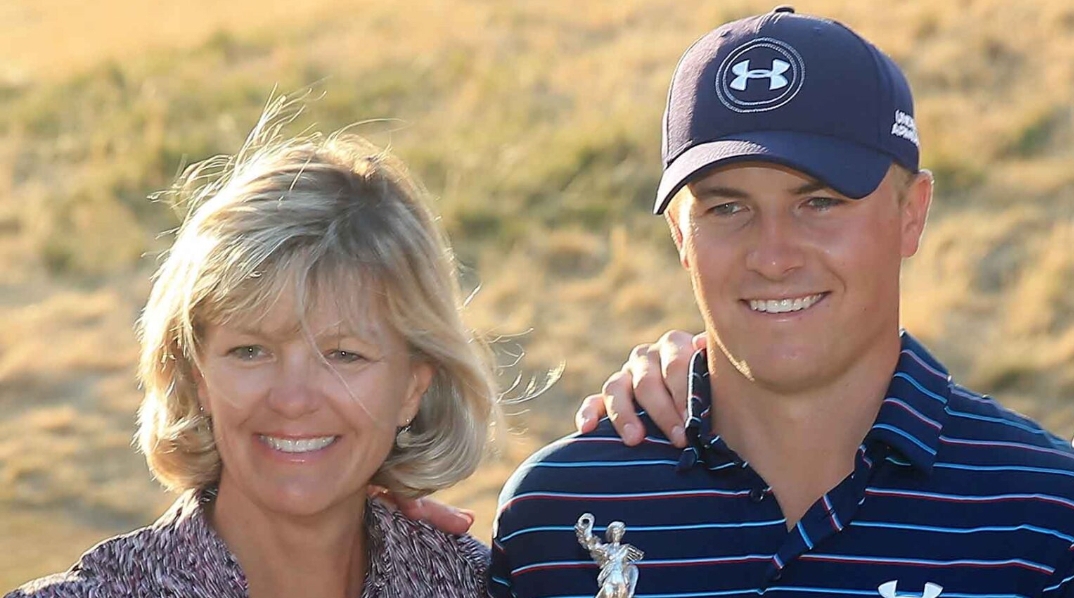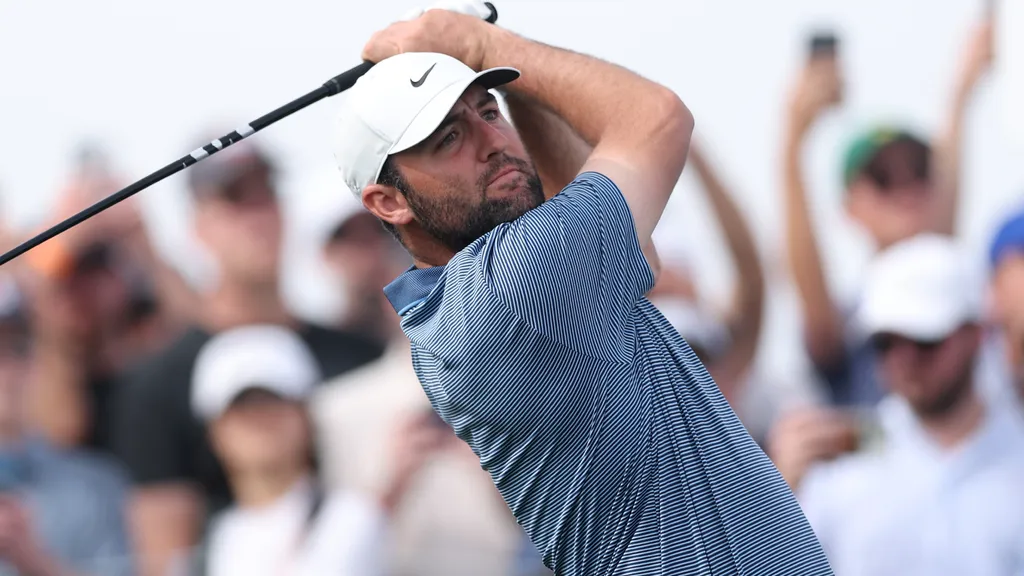Ted Scott, in downtime from his day job as caddie for the world’s top-ranked golfer, says he rarely plays with scratch-type golfers. His friends are decent, he says, but not great, so it gives him a lens few have — he sees how Scottie Scheffler does things, and he sees how the non-Scottie Schefflers maneuver around a course.
One of his takeaways from the latter bunch?
They struggle the most in two ways.
Scott was talking on the most recent episode of “The Sweet Spot” podcast — which you can and should listen to in full here — and part of the conversation looked at how Scott, as a caddie, prepares for shots. Part of it, he said, depends on a player’s skill — which segued into one of the areas non-pros are deficient.
They don’t properly know their strengths, Scott said.
“So if my strength is chipping,” Scott said on the podcast, “then go ahead and give yourself way more room than the middle of the green. If your strength is not chipping, then try to hit a good 3-wood from 230, if that’s what you’re going to do because you know you’re not going to chip it good anyway so it’s about managing your own game.”
To illustrate, he used a story about Bubba Watson, whom Scott worked for before Scheffler.
For background, simply know that Watson is a creative player.
“So how do I caddie? I am specifically thinking of my player,” Scott said on the podcast. “What does my player like? What does my player not like? So whenever I caddie for Bubba, it’s like, he’s going to duck-hook and duck-slice irons into these pins. So when we’re at Hilton Head and there’s no room, I’m like, we shouldn’t be playing here. Why are we showing up here? Because there’s no room to sling it — the trees are overhanging and the greens are narrow, so I’m like, we have no way to play here; you have to hit the ball straight. And sure enough, we played there, and as I’m walking the course, Bubba’s like, I hate this place. I’m like, yeah, I can see that because it doesn’t fit the way you play golf. I’m like, I hate caddying here for you because it’s just not good.
“And then you go to a place like Augusta, I’m like, we’re probably going to win this golf tournament. And he did. Because it’s like, oh, I can land it over there on that mound and spin it 50 feet down to this pin. Dude comes alive. ‘Ooh, watch this,’ you know. He’s super creative, crazy brain — ‘ooh’ — and he can do all kinds of wild stuff. And you’re like, OK, how is Bubba Watson going to see this, how can I use his language? He loves the word ‘a dink cut’ off the tee. ‘OK, I like the dink cut here, I like a big ole draw.’ I’m trying to use his words, his language, speak his thoughts and try and get him to manage his strengths around this place. And so that’s all I’m doing as a caddie is trying to figure out what is my guy good at, what’s the mistake, what can he handle, what sets him off, what doesn’t.”
The other item Scott says he sees players struggle with?
Expectations.
“The thought that you think you’re supposed to hit your 3-wood from 230,” Scott said on the podcast. “… You think you hit your 3-wood from 230 onto a small target consistently and get frustrated.
“It’s like, bro, it’s 230. Like if we had a par-3 that was 230 yards on the PGA Tour, half the guys would miss the green, and you’re over here, Joe Hacker, playing twice a month and you think you’re supposed to do it.”
As part of the discussion, Scott shared another story. Remember Jordan Spieth’s cliff shot on the 8th hole at Pebble Beach in 2022?
Scott said that Spieth has a “theory” on the hole, which he’s also explained to his caddie, Michael Greller.
“He said, Michael, every time I’m on this tee, I’m just going to push the ball up there as far as I can,” Scott said on the podcast. “And probably like one out of 10 it’s actually going to go in the canyon. But I’m OK with that because the nine out of 10 it doesn’t, the shot is way easier into the green. It’s one of the hardest greens to hit and you’re so far back. It’s like a postage stamp and you’re hitting a 200-yard shot and it’s ocean breeze, where the ball doesn’t go as far. So you’re like, this is an impossible green to hit. It’s a tough green to chip. So he has this cool theory, hey, one out of 10, I’ll just hit it in the canyon trying to get it up there, and that’s going to help me overall with scoring. So you’re like, hey, that’s logical and he won’t be freaked out if he hits it in there. It’s like, oh, here’s my one out of 10.
“But if you tried to suggest that as a caddie to certain players, hey, let’s just push it up there, they would be loving it until that one ball went in there and then they would be headless for the next five holes. And you’re like, we are better off making three more bogeys out of 10 than Jordan Spieth because it doesn’t affect the next five holes than Jordan Spieth does making two less bogeys by pushing it up there and hitting it in the canyon one. Because that’s the psychology of whatever player I’m talking about. So you have to be thinking, not only one, what is my guy’s strength, but also, what sets my dude off, what gives him confidence and try to figure out how to manage him to where he feels great and keeps his cortisol levels low as he travels around the course.



